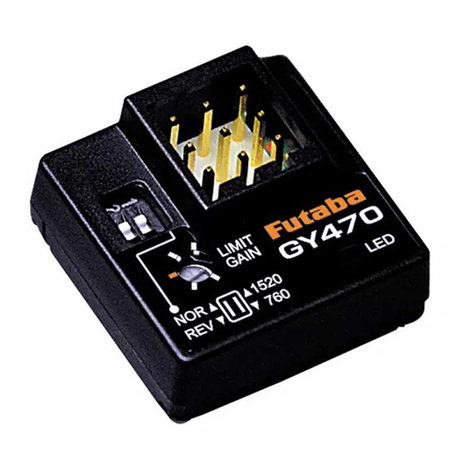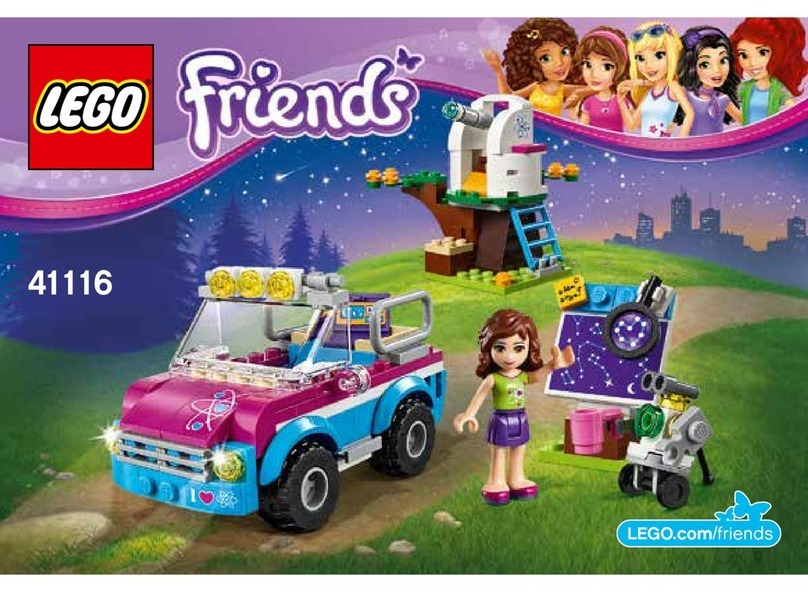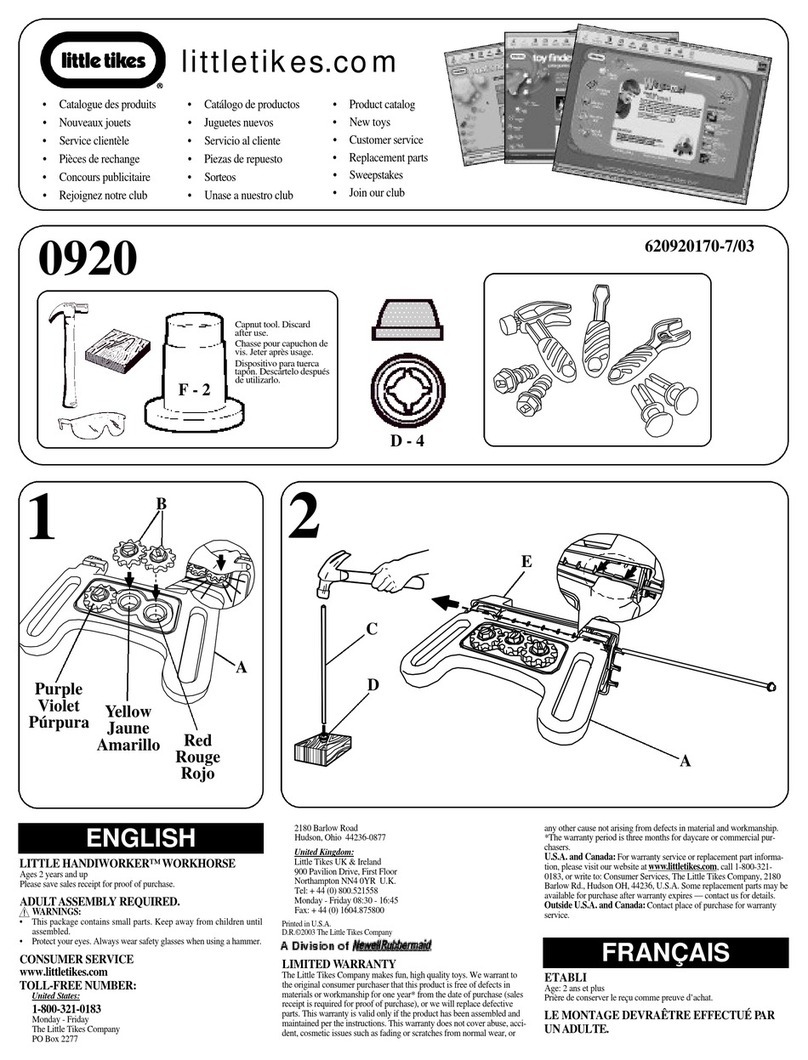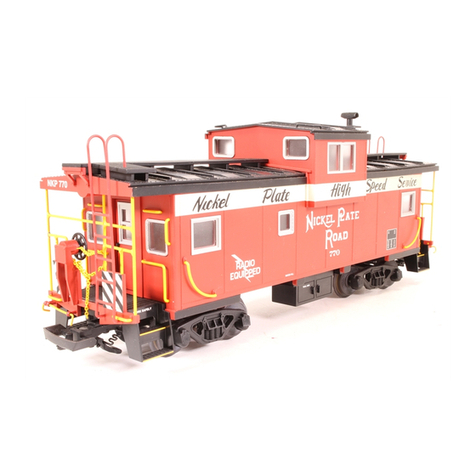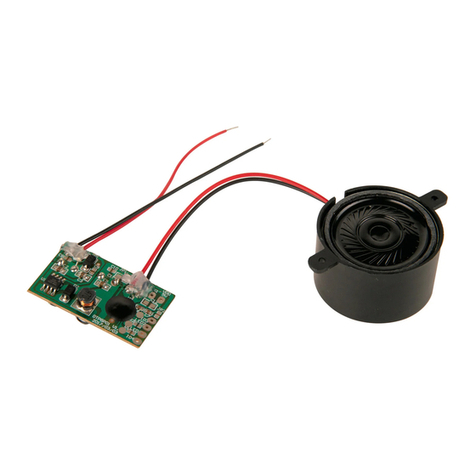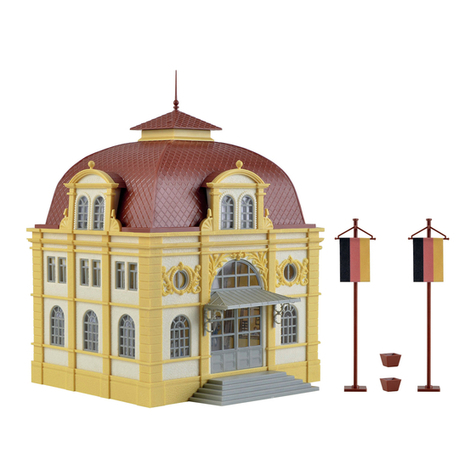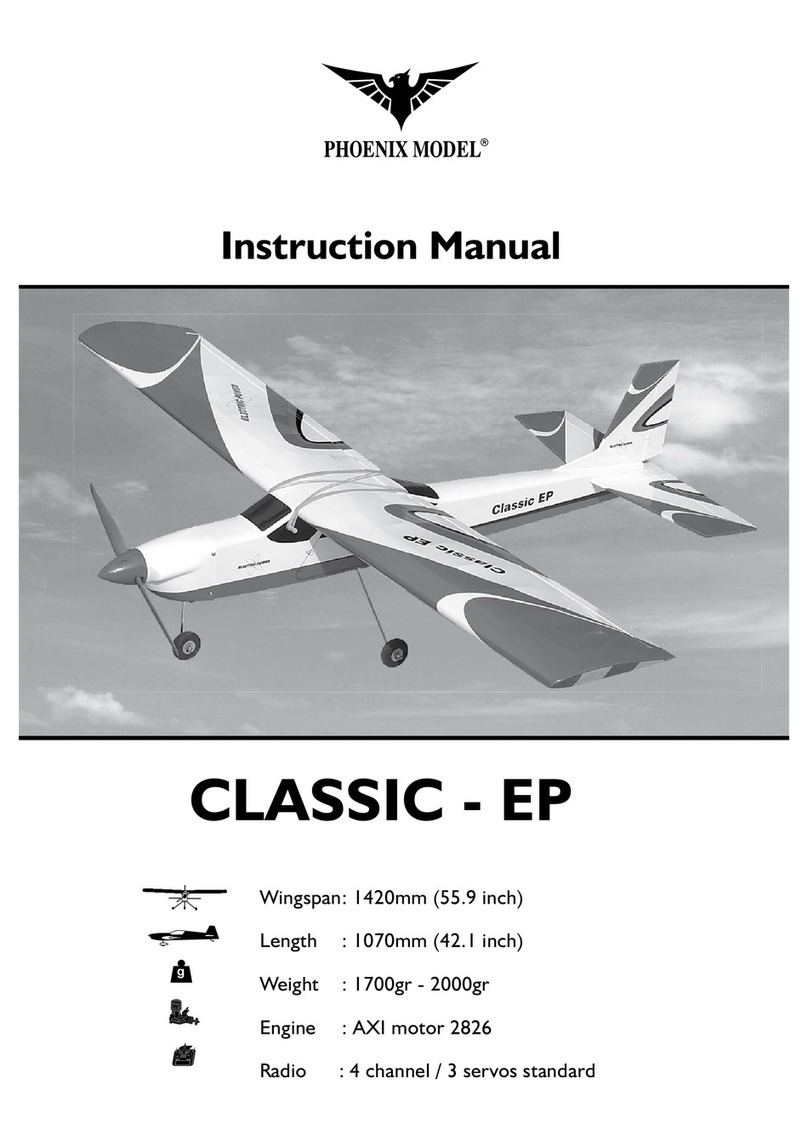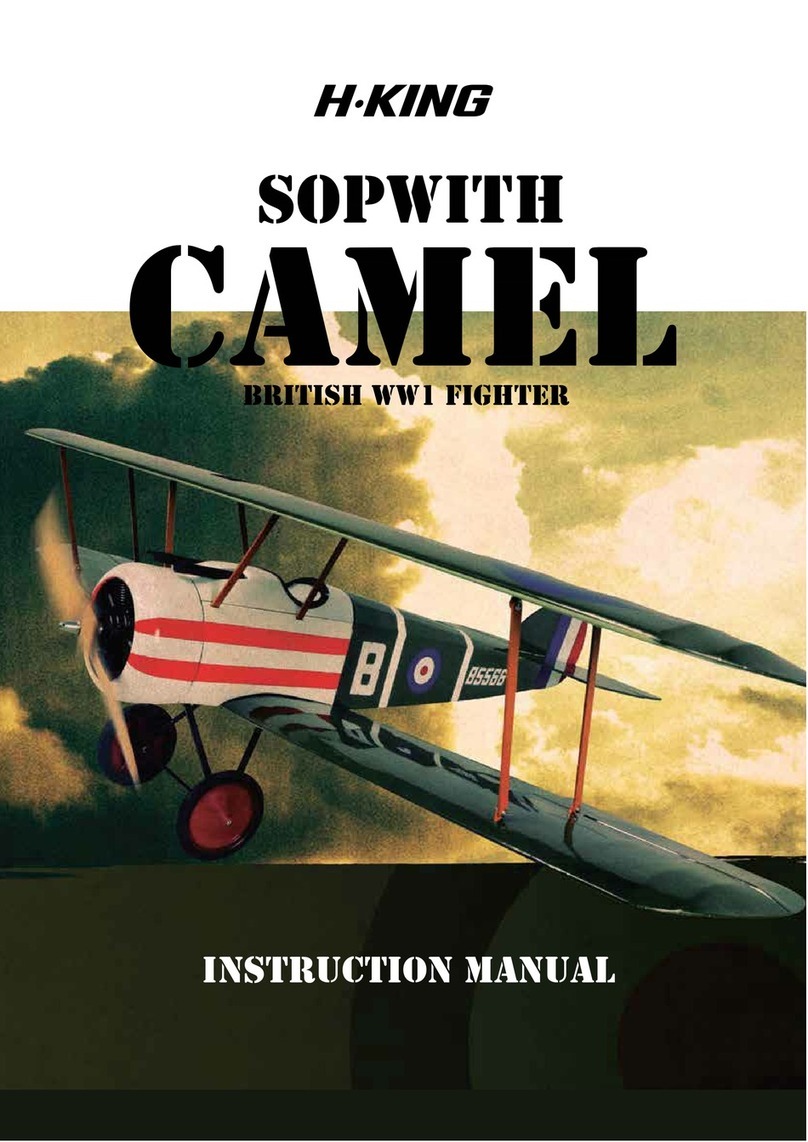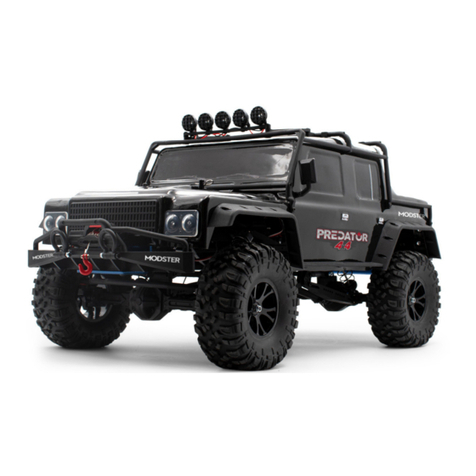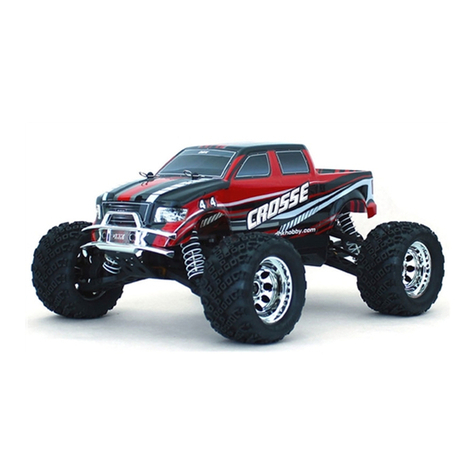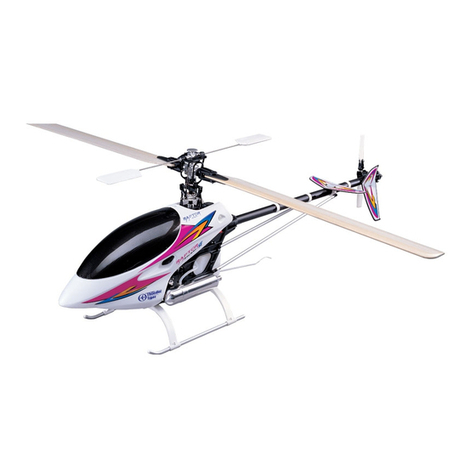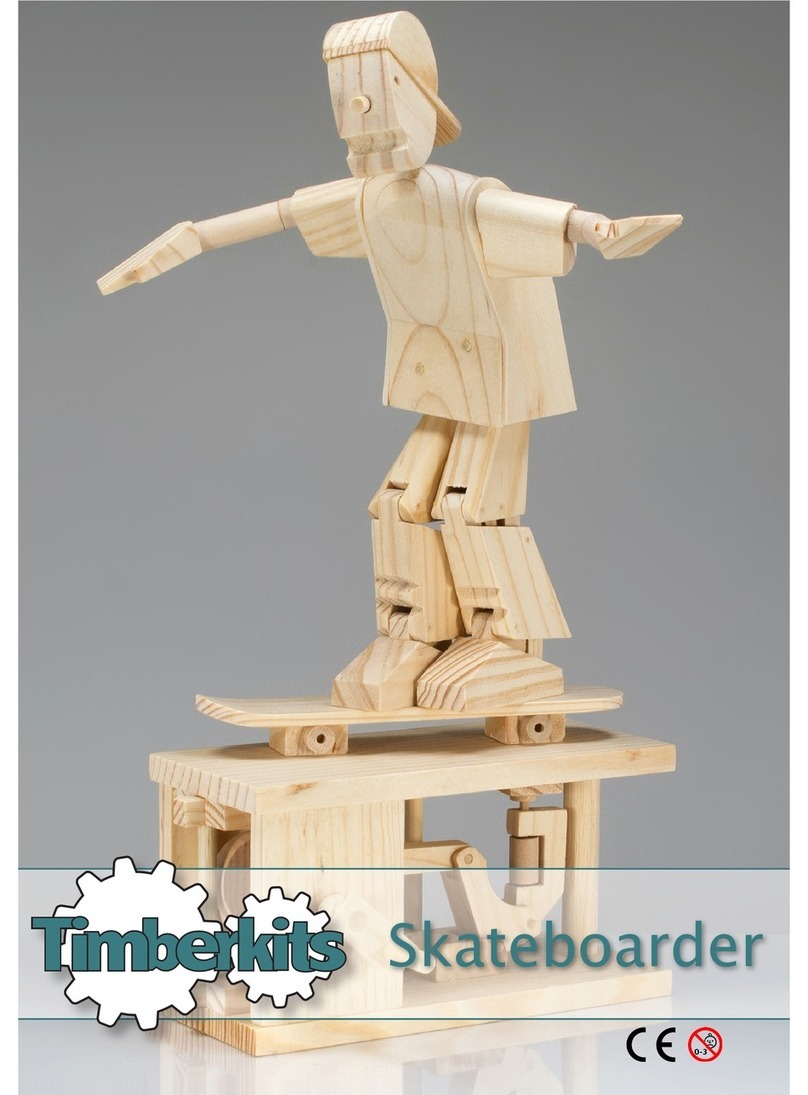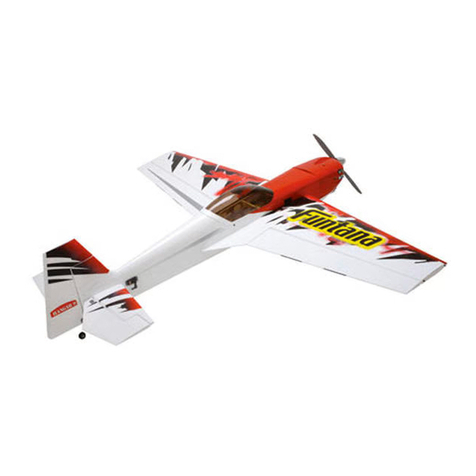
1. Assemblage de l'aile:
Coupez le longeron principal un peu plus long que ce que le plan indique. Couvrir le plan avec du papier beurre ou un
plastique fin et transparent. Placez le longeron principal sur le plan. Placez également des cales de 5mm (3mm pour la
version 155cm) sous ce longeron et maintenir le tout en place en lestant. Glissez et collez toute les nervures W2 et W3 en
place. Lestez les nervures de sorte qu’elles restent bien positionnées. Mettre en place le longeron supérieur en balsa DUR ou
en pin. Une fois les collages secs, retirer les poids, retourner et ajouter le longeron inférieur.
Couper et poncer le bord de fuite au profil indiqué sur le plan. Une fois terminé, posez-le sur le plan et pesez-le. Posez
également une baguette de balsa le long de la position des longerons sur le plan. Ensuite, posez l'aile à l’envers sur le plan, le
long du bord de fuite, en veillant à ce que le joint entre les nervures et le bord de fuite soit parfait. Faites glisser la baguette
en conséquence. Le but est que le dessus (extrados) de la nervure et le dessus du bord de fuite soient parfaitement alignés.
Après séchage, retourner l’aile et la déposer sur le plan. Coller le bord d'attaque en place, en utilisant des élastiques pour le
maintenir en place. Après prise de la colle, retirez l’aile. Disposez maintenant toutes les pièces "W" sur le plan. Collez W8 et
W9 ensemble et W6 et W7 ensemble également. Posez à nouveau l'aile sur le plan et vérifiez que l’ensemble des pièces
s’ajuste parfaitement. Ajustez les pièces si nécessaire. Coupez le longeron principal pour qu'il s'adapte aux pièces du bout
d’aile et adaptez W6 et au bord de fuite et au bord d'attaque. Collez les deux assemblages en place, en tenant compte
qu'une cale de 5mm (3mm pour la version 155cm) peut être nécessaire pour garder le tout dans le bon axe. Ne collez pas les
deux longerons aux pièces du saumon maintenant! Attendez que les collages soient secs, puis ajuster l’extrémité de ces
longerons sans les coller en place. Glissez en place W4 et W5 et collez-les. Pincez ensemble les deux longerons mis à mesure
et collez-les en place. Ajoutez maintenant W5A et ajustez. Poncez les pièces du saumon
Couper une planchette de balsa (pour la version 235, il faudra rabouter deux planchettes, les planchettes ne dépassant pas
1m) à 65mm (50mm pour la version 155). Testez l'ajustement et collez ce coffrage en place entre le bord d'attaque
supérieur et l’arrière du longeron supérieur. Voir le plan. Vous pouvez utiliser des pinces à linge pour le maintenir en place
pendant le séchage. Pour éviter les vrillages, placez la demi aile une surface plane et lestez-la. Ajoutez ensuite le coffrage
inférieur de la même manière. Poncez maintenant le tout, en veillant à respecter le profil de l’aile.
Construire la seconde moitié de l’aile de la même manière.
Poncer le centre de l'aile de sorte que l’angle corresponde à l’angle du dièdre prévu. Glisser W1 et coller les clés d’aile W-G
sur une des ailes. Une fois le collage assuré, joignez les deux moitiés, vérifiez l'ajustement, et collez.
2. Assemblage de fuselage
Le fuselage est constitué d’un gabarit horizontal, d’une quille inférieure et d’un assemblage supérieur, chaque ensemble
étant traité séparément avant assemblage final.
Faire tremper environ 50cm d'une paire de longerons 8 * 8mm de longueur 120cm (5*5, 30 et 80 cm pour la version 155cm).
En utilisant le plan du gabarit, couper quelques (mais pas tous) raidisseurs perpendiculaires 8 * 8mm à la longueur indiquée,
et les maintenir en place avec des poids ou des épingles. Disposez les longerons sur le plan, et pliez en forme, maintenez en
place avec des poids ou des épingles jusqu'à ce qu'ils sèchent. Collez alors les raidisseurs sur les longerons. Ensuite, coupez
et collez le reste des raidisseurs. Poncez légèrement dessus et le dessous du gabarit afin qu’il soit bien plan.
Maintenant, étalez les pièces K sur le plan et collez. Glissez sur le gabarit toutes les parties B, mais ne les collez pas encore.
Vérifiez que toutes les pièces s’emboitent correctement, et corrigez si besoin. Maintenant, collez la quille (ajustée si besoin)
et les pièces B en place. Ensuite, collez la languette sur l’ensemble K. Il sera vraisemblablement nécessaire de la mouiller
